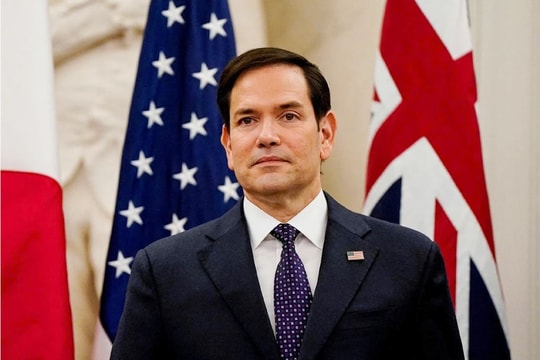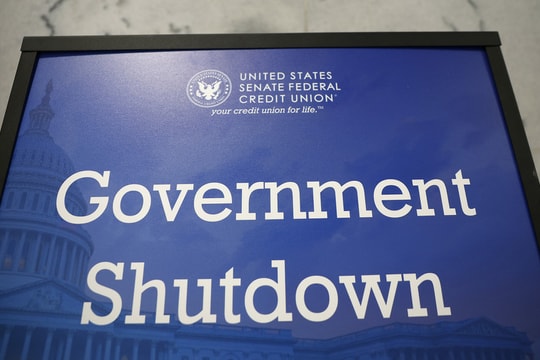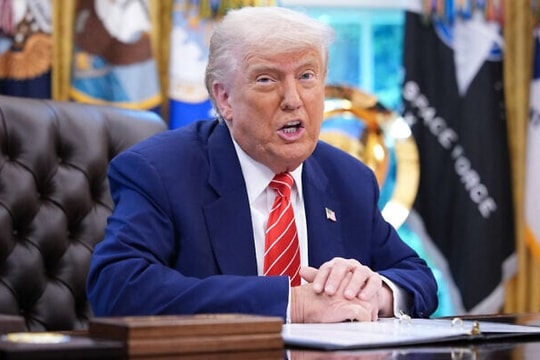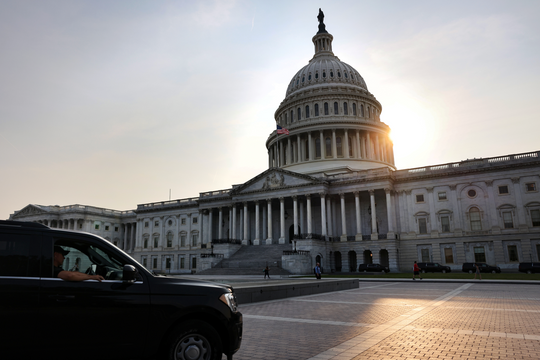Wrong 'move' could push the 'chess game' between the US and Iran into a dangerous ending
(Baonghean) - Exactly one year after the US withdrew from the Iran nuclear deal in May 2018, the confrontation between the US and Iran is becoming increasingly tense with "troop movements" by both sides in recent days.
Although it is known that these are pressure moves from both sides with different purposes: the US is to renegotiate, and Iran is to maintain the agreement, public opinion still does not rule out the possibility of a military confrontation if one of the two sides makes a miscalculation.
| US President Donald Trump and Iranian President Hashim Rouhani have both made tough statements about the possibility of military confrontation. Photo: Getty Images |
Noisy troop deployment
After US President Donald Trump's offer of negotiations was flatly rejected by Iran, the US immediately took action to prove Mr. Trump's statement that "a military confrontation cannot be ruled out due to increased tensions."
The US Navy announced that the nuclear-powered aircraft carrier USS Abraham Lincoln has been deployed to the Persian Gulf along with a series of other powerful warships such as USS Arlington, USS Bainbridge, USS Mason, and USS Nitze.
The US also announced the redeployment of Patriot missile defense units in the Middle East, even dispatching B-52 bombers to a base in Qatar.
The deployment will add significant military muscle to US forces already stationed in the region and is seen as the latest twist in President Donald Trump's "maximum pressure" campaign against Iran, after seeking to cut off the Middle Eastern country's entire oil export pipeline.
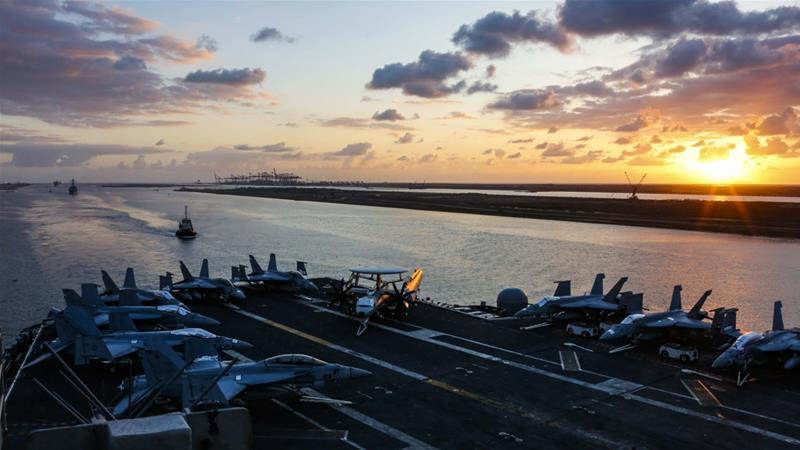 |
Nuclear-powered aircraft carrier USS Abraham Lincoln passes through the Suez Strait to the Persian Gulf Photo: Al Jazeera |
On the other side, Iran has shown no signs of backing down under pressure. In a speech over the weekend, Iranian President Hassan Rouhani called on the Iranian people and all forces to unite in the face of unprecedented US pressure, overcoming a difficult period not unlike the 1980-1988 Iran-Iraq war.
Meanwhile, Ayatollah Tabatabai Nejad, the “right-hand man” of Supreme Leader Ayatollah Ai Khamenei, also firmly declared that Iran's missiles are fully capable of destroying the US's “billion-dollar fleet”, and if the US makes any dangerous moves, the decision will not belong to moderate President Hashan Rouhani but to Supreme Leader Ayatollah Ai Khamenei, a politician who favors a hard line with the US.
This is not an empty threat as intelligence information obtained by the US shows that Iran is also moving missiles on warships stationed in the Persian Gulf.
No more “Iran of old”
The fact that both the US and Iran are preparing their forces for any military confrontation, even war, comes as Iran is showing a significant change in its approach to the nuclear issue.
Not long before rejecting the US's offer to negotiate, Iran issued an "ultimatum" that it would resume its nuclear program if the signatories to the nuclear agreement between Iran and the P5+1 group did not take measures to ensure Iran's rights against US sanctions.
These moves by Iranian President Hassan Rouhani stem from domestic pressure. Previously, when Mr. Rouhani signed this agreement, there were many objections from hard-line figures within Iran.
And when Donald Trump decided to withdraw from the agreement, this force had more grounds to put pressure on Mr. Rouhani not to enter into negotiations with the US a second time. Even some of the previous moderate allies have "abandoned" Mr. Rouhani.
Iran sees the US as an unreliable partner, as there is no guarantee that Donald Trump will not again abandon the negotiations. Not only in the political circles, but also among the Iranian people, support a tough approach towards the US.
Thousands of Iranians took part in rallies over the weekend to support the government's decision to scale back its commitments under the nuclear deal with the P5+1 group and prepare to face US sanctions.
The US side also cannot help but notice Iran's change in strategy. The US's massive deployment of troops to the Persian Gulf also stems from the perception that Iran has ended its "waiting for time" strategy, and is instead preparing for a possible military attack on US forces stationed in the region.
Previously, the US still believed that Iran would try to withstand US sanctions for about the next 20 months in the hope that Donald Trump would be replaced by a President with a more moderate view.
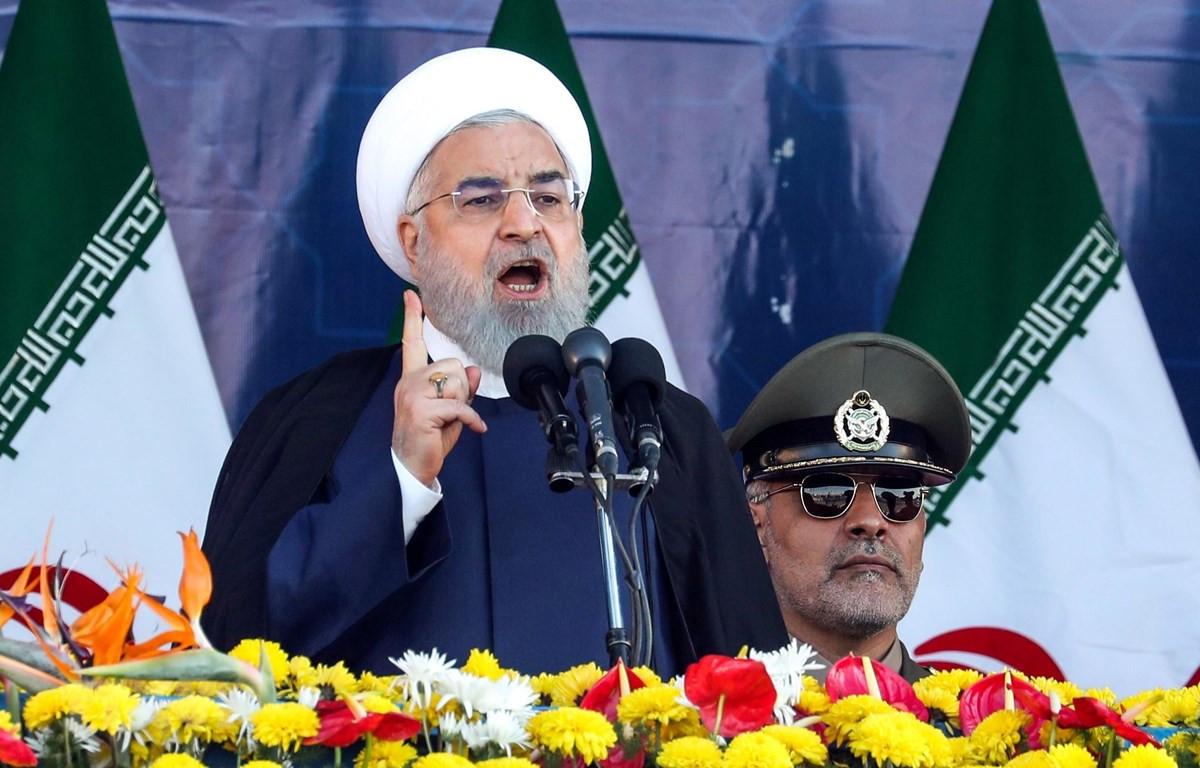 |
| Iranian President Hassan Rouhani. Photo: AFP/TTXVN |
But intelligence reports over the past week have confirmed that the Iranians are ready to reset their strategy now, either because US sanctions have tightened so much that Iran cannot wait until January 2021, or because there is no firm sign that Donald Trump will lose the next presidential election.
Marine General Frank McKenzie, head of the US military's Central Command, also stated that "Iran's long-standing buildup has led to a number of indicators of the potential for escalation of trouble for the United States," and this forced the US to have appropriate preparations for any potential conflict outbreak.
The biggest concern from the US side is an Iranian attack on the 5,000 US troops currently stationed in Iraq with the mission of ensuring the security of this country.
Given the moves by both the US and Iran, analysts say the possibility of a military confrontation cannot be ruled out, even though this is a scenario that neither side wants.
However, when both sides want to use the "pressure" tactic, if one side does not carefully calculate the other side's "tolerance limit", just one wrong "move" can push the whole "chess game" into a dangerous ending.
Therefore, Europe - the side standing in the middle of the tense confrontation between the US and Iran - is strongly calling on all sides to continue to seek a diplomatic solution. However, whether this call is met or not depends on the ability of the "hot heads" on both sides to restrain themselves.


